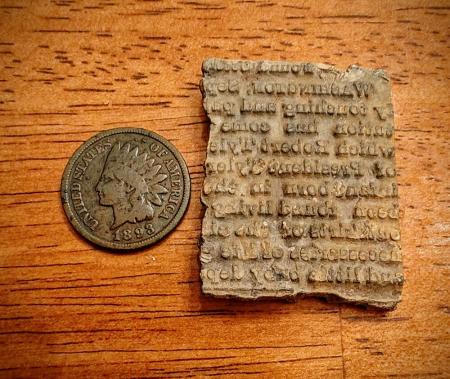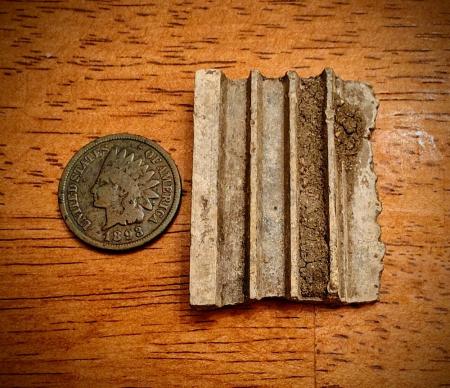Block of type found- what machine created it?
This type was found with a metal detector and posted on a detecting forum I frequent. The detectorist assumed it was Linotype but I told him as far as I knew, Linotypes cast “a line of type” - not multiple lines together. I worked in a shop that still had two Linos and a Ludlow in the 1980s but have no experience with typecasting otherwise. If it helps give a clue, this story was run in multiple papers we found after doing a search, so it was along the lines of a ‘wire’ story. Thanks!

IMG_20240226_214020132_2.jpeg

IMG_20240226_215531953_2.jpeg
This is a piece broken off from a stereotype printing plate cast from a flong (mould) which itself was made from a forme of type.
This is a piece broken off from a stereotype printing plate cast from a flong (mould) which itself was made from a forme of type.
Thank you! We used to have some flongs at the shop but i never saw the finished product.
This is not the typical stereotype. It was a commercial product furnished to subscribers of a service, like a newspaper, that had precast bases that would interlock with the plate in various sizes mainly to fill up space. New plates were sent out to keep the material relevant. A similar service provided mats with various subjects where the printer could use what was appropriate and cast his own plates. I know that here in Silverton, that mat collection grew to several feet thick by the time our weekly newspaper converted to offset in the early 1970s, and then they received repro proofs.
Fritz, is that what they used to call “boilerplate” copy?
Any ideas how it got that name?
-Bob
Google reports:
Where did the term boilerplate come from?
Etymology. “Boiler plate” originally referred to the rolled steel used to make boilers to heat water. Metal printing plates (type metal) used in hot metal typesetting of prepared text such as advertisements or syndicated columns were distributed to small, local newspapers, and became known as ‘boilerplates’ by analogy.
Fritz1 - sounds spot-on. Searching the text on Newspapers.com shows several papers running the story with the exact same type placement, i.e. the words line up vertically exactly. Passing it on to the fellow who found the piece! Thanks!
Fritz1 - sounds spot-on. Searching the text on Newspapers.com shows several papers running the story with the exact same type placement, i.e. the words line up vertically exactly. Passing it on to the fellow who found the piece! Thanks!
Fritz1 - sounds spot-on. Searching the text on Newspapers. com shows several papers running the story with the exact same type placement, i.e. the words line up vertically exactly. Passing it on to the fellow who found the piece! Thanks!
Fritz1 - sounds spot-on. Searching the text on Newspapers. com shows several papers running the story with the exact same type placement, i.e. the words line up vertically exactly. Passing it on to the fellow who found the piece! Thanks!
Fritz1 - sounds spot-on. Searching the text on Newspapers. com shows several papers running the story with the exact same type placement, i.e. the words line up vertically exactly. Passing it on to the fellow who found the piece! Thanks!
Fritz1 - sounds spot-on. Searching the text on Newspapers. com shows several papers running the story with the exact same type placement, i.e. the words line up vertically exactly. Passing it on to the fellow who found the piece! Thanks!